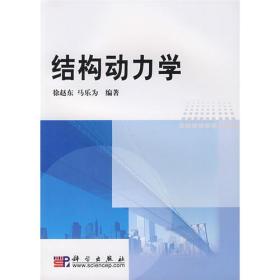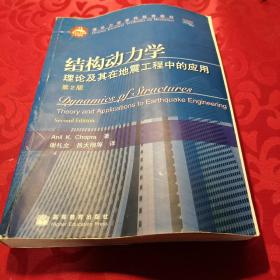
结构动力学
全新正版 极速发货
¥ 34.42 5.9折 ¥ 58 全新
库存2件
广东广州
认证卖家担保交易快速发货售后保障
作者周思达,(比)沃德·海伦(Ward HEYLEN),刘莉 编著
出版社北京理工大学出版社
ISBN9787568231008
出版时间2016-09
装帧平装
开本16开
定价58元
货号1201457785
上书时间2024-11-22
- 最新上架
商品详情
- 品相描述:全新
- 商品描述
-
目录
1 Introduction to Structural Dynamics
1.1 Essential Characteristics and Basic Assumptions
1.1.1 Essential Characteristics
1.1.2 Basic Assumptions in Structural Dynamics of This Book
1.2 Missions of Structural Dynamics
1.2.1 Response Analysis
1.2.2 Inverse Problem of Type I: System Identification
1.2.3 Inverse Problem Type II: Load Identification
1.2.4 Vibration Control
1.3 Types of Dynamic Loads
1.3.1 Periodic Load
1.3.2 Impulsive Load
1.3.3 Random Load
1.4 Formulation of the Equations of Motion
1.4.1 Direct Equilibration Using dAlemberts Principle
1.4.2 Variational Approach
1.5 Continuous and Discrete Structural Systems
References
2 Time-Domain Analysis of Continuous Systems
2.1 Free Transverse Vibration of Strings
2.2 Free Axial Vibration of Elastic Rods
2.3 Free Torsional Vibration of Cylinder Rods
2.4 Free Transverse Vibration of Euler-Bernoulli Beams
2.4.1 Simple Supported Beams
2.4.2 Cantilever Beams
2.4.3 Fixed-Fixed Beams
2.4.4 Free-Free Beams
2.5 Free Transverse Vibration of Rectangular Thin Plates
2.5.1 Kinematic Description
2.5.2 Equilibrium Equation
2.5.3 Boundary Conditions
2.5.4 Solutions of Rectangular Thin Plates with Simple-supported Edges
2.6 Some Properties of Natural Modes
2.6.1 Orthogonality of Mode Shapes
2.6.2 Modal Scaling
2.6.3 Expansion Theorem
2.6.4 Rayleigh Quotient
Problems
References
3 Time-Domain Analysis of SDOF Systems
3.1 From Continuous Systems to Generalized SDOF Systems
3.1.1 Historical Rayleighs Method
3.1.2 An Improved Approach of Rayleighs Method
3.2 Mathematical Modelling of Lumped-Parameter Systems
3.2.1 Direct Equilibration Modeling Using dAlemberts Principle
3.2.2 Modeling Based on Principle of Virtual Displacements
3.3 Free Vibration of SDOF Systems
3.3.1 Free Vibration of Undamped SDOF Systems
3.3.2 Free Vibration of Viscous-Damped SDOF Systems
3.4 Dynamic Behavior of Undamped SDOF Systems under Harmonic Excitation
3.5 Viscous-Damped SDOF Systems to Harmonic Excitation
3.5.1 General Solution
3.5.2 Steady-State Response
3.5.3 Complex Expression of the Response
3.5.4 Resonance Response
3.5.5 Forced Vibration by Support Motion
3.5.6 Vibration Isolation
3.5.7 Motion Transducer
3.6 Expansion to Periodic Excitation via Fourier Series
3.6.1 Fourier Series for Arbitrary Periodic Functions
3.6.2 Steady-State Response under Arbitrary Periodic Excitations
3.7 Response to Impulsive Loading
3.7.1 Pulse Excitation
3.7.2 Shock Response Spectrum
3.7.3 Shock Isolation
3.8 Response of SDOF Systems in Case of the General Dynamic Excitation
3.8.1 Impulse Function
3.8.2 Impulse Response
3.8.3 Duhamel Integration
3.8.4 Arbitrary Support Motion
3.9 Damping
3.9.1 Damping Models in Structural Dynamics
3.9.2 Energy Losses and Equivalent Viscous Damping
3.9.3 Illustration of the Errors Due to the Equivalence
Problems
References
4 Time-Domain Analysis of MDOF Systems
4.1 Continuous Systems to MDOF Systems: Discretization Approaches
4.1.1 Direct Lumped-Parameter Methods
4.1.2 Generalized Displacements & Rayleigh-Ritzs Methods
4.1.3 Assumed Mode Method: a Realization of General Rayleigh-Ritz Methods
4.1.4 Choosing the Shape Functions
4.1.5 Finite Element Method
4.2 Modeling of Equations of Motion for MDOF Systems
4.2.1 Direct Equilibration Modeling Using dAlemberts Principle
4.2.2 Modeling with Principle of Virtual Displacements
4.2.3 Modeling with Lagranges Equations
4.3 Free Vibration of Undamped MDOF Systems
4.3.1 Eigenvalue Problem, Natural Frequencies and Mode Shapes
4.3.2 Orthogonality
4.3.3 Modal Scaling
4.3.4 Eigenvalue Separation Property
4.4 Rayleigh and Rayleigh-Ritzs Methods for MDOF Systems: Model Reduction
4.4.1 Rayleigh Quotient for MDOF Systems
4.4.2 Rayleighs Method for MDOF Systems
4.4.3 Rayleigh-Ritzs Method for MDOF Systems
4.4.4 Assumed Mode Method for MDOF Systems
4.5 MDOF Systems with Rigid-Body Modes
4.5.1 Small Fictitious Stiffness
4.5.2 Eigenvalue Shifting
4.5.3 Constraining of Rigid-Body Modes
4.6 Damping in MDOF systems
4.7 Numerical Evaluation of Responses of MDOF Systems
4.7.1 Numerical Derivatives
4.7.2 Central Difference Method
4.7.3 Newmark-β Method
4.8 Dynamic Response of MDOF Systems: Mode Superposition Method
4.8.1 Transformation of Coordinates
4.8.2 Modal Damping
4.8.3 Initial Conditions in Modal Coordinates
4.8.4 Mode Superposition for Free Vibration of Undamped MDOF Systems
4.8.5 Mode Superposition of Free Vibration of Damped MDOF Systems
4.8.6 Mode Superposition of Forced Vibration of Undamped MDOF Systems
4.8.7 Mode Superposition of Forced Vibration of Damped MDOF Systems
4.8.8 Mode-Displacement Solution and Mode-Acceleration Solution
Problems
References
5 Frequency-Domain Analysis
5.1 Frequency-Domain Analysis of SDOF Systems
5.1.1 System Equations and Transfer Function
5.1.2 Poles, Natural Frequencies, Damping Ratio and Residues
5.1.3 Transfer Function Plots
5.1.4 Frequency Response Function and Impulse Response Function
5.1.5 Influence of Mass, Damping and Stiffness Changes -.
5.2 Frequency-Domain Analysis of MDOF Systems
5.2.1 System Equations and Transfer Function
5.2.2 Poles, Natural Frequencies and Damping Ratio
5.2.3 Modal Vectors and Residues
5.2.4 Modal Participation Factors
5.2.5 Frequency Response Function Matrix and Impulse Response Function Matrix
5.2.6 Undamped and Proportionally Damped Systems
5.2.7 Orthogonality
5.2.8 Modal Vector Scaling
5.2.9 Numerical and Experimental Approaches
References
6 Experimental Modal Analysis and Applications
6.1 Basic Modal Model Equations
6.1.1 Modal Model
6.1.2 State Space Model
6.1.3 Rational Fraction Polynomial Model
6.2 Modal Parameter Estimation
6.2.1 Basic Concept
6.2.2 SDOF Methods
6.2.3 MDOF Time-Domain Methods
6.2.4 MDOF Frequency-Domain Methods
6.2.5 Output-Only or Operational Modal Analysis
6.2.6 Conclusions
6.3 Modal Validation
6.3.1 Modal Scale Factor and Modal Assurance Criterion
6.3.2 Mode Participation
6.3.3 Reciprocity
6.3.4 Mode Complexity
6.3.5 Modal Phase Collinearity and Mean Phase Deviation
6.3.6 Modal Confidence Factor
6.3.7 Synthesis of Frequency Response Functions
6.3.8 Discussion
6.4 Applications of Modal Parameters
6.4.1 Forced
相关推荐
— 没有更多了 —




















以下为对购买帮助不大的评价